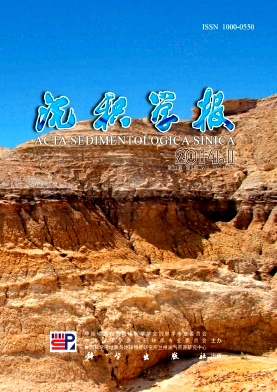Geochemical Characteristics and Genetic Analysis of Carboniferous Dolomite in Huize Basin,Yunnan
- Publish Date: 2014-02-10
-
Key words:
- Carboniferous /
- dolomite /
- geochemical characteristics /
- genesis /
- Yunnan Huize
Abstract: The dolomite of Carboniferous in Baizuo Formation in Huize, Yunnan was studied by several methods such as petrological analysis, geochemistry analysis and isotope, in order to understand its geochemical characteristics and genesis. The study area is located in central Yunnan (Kunming) Mesozoic uplift zone, which belongs to the Yangtze micro-continent of the South China block group. The dolomite rock is mainly characterized by colors in gray-white gray, flesh red, beige, and coarse-grained dolomite, and it has the subhedral-euhedral structure. The analysis based on MgO—CaO indicates that the formation of the dolomite is due to the accountable or recrystallization, and is not due to the sedimentation. The trace elements analysis shows that the content of Sr in the dolomite rock is low. It indicates that the dolomite may be formed in post-burial genesis and the time of dolomitization is late,Therefore, Sr had been an abundant loss, consequently, the Sr/Ba ratio is relatively high.The result indicates that the medium of water is high in salinity when the dolomite is under diagenesis in deep burial. The distribution pattern of rare earth elements shows a negative anomaly of Ce and Eu. Ce3+ ions is negative anomaly because Ce3+ was oxidized to the soluble Ce4+ ions. Eu is negative anomaly because it was brought out in priority in the chemical weathering process. According to the carbon and oxygen isotope, a relatively higher salinity index(121~125) and diagenetic temperature (52.40℃~69.44℃) were observed. It indicates that the illumincited dolostones were formed under the high concentrated salinity and high temperature. We inferred that the dolomite in the region was in deep burial environment. According to the report of the regional stratigraphy investigation and regional tectonic evolution, We speculated that the time of the dolomitization may occur in the Permian, and it should belong to the epigenetic dolomite. We concluded that the dolomite in Huizhe was formed under deep burial conditions. Due to the structure function and the influence of the earth's crust uplift, the Baizuo Formation was raised to the earth surface and the dolomite in this formation experienced the chemical weathering,then created the negative anomalies of Eu. This may be related to the tensile and vertical lifting movements of Indo-China-Hercynian stage in the Northeast Yunnan.
| Citation: | Geochemical Characteristics and Genetic Analysis of Carboniferous Dolomite in Huize Basin,Yunnan[J]. Acta Sedimentologica Sinica, 2014, 32(1): 118-125. |






 DownLoad:
DownLoad: